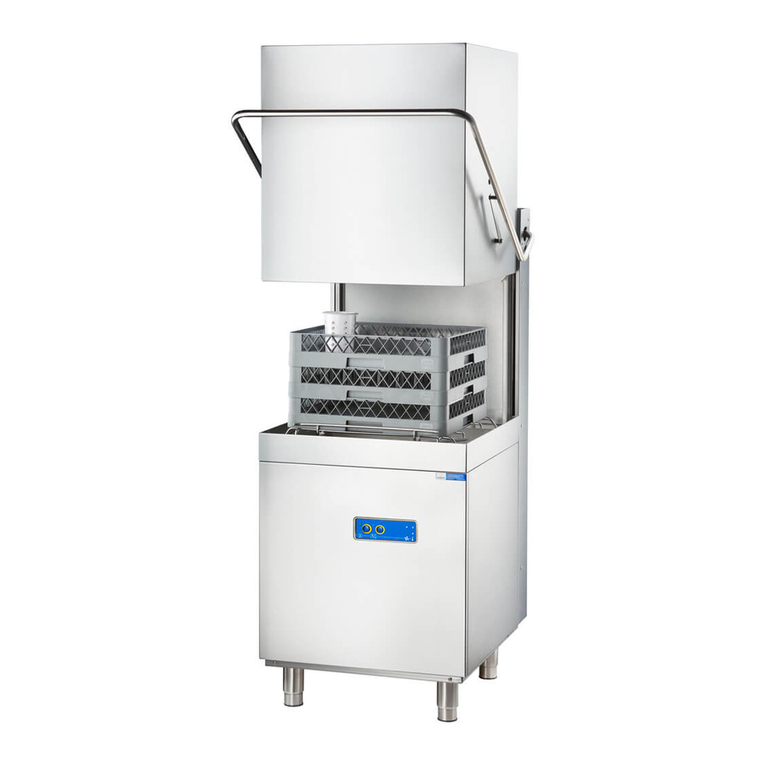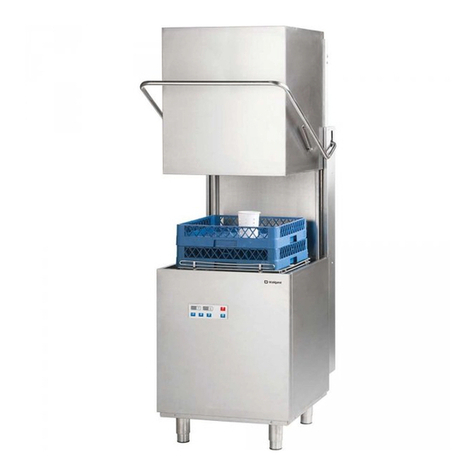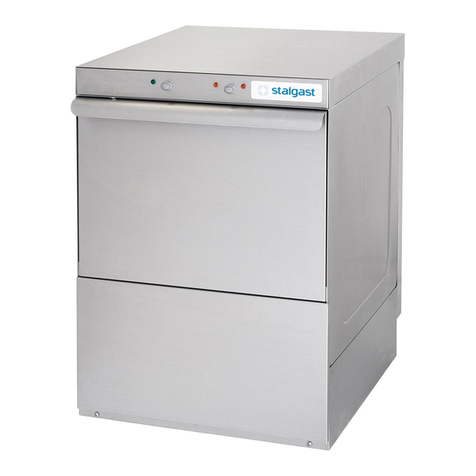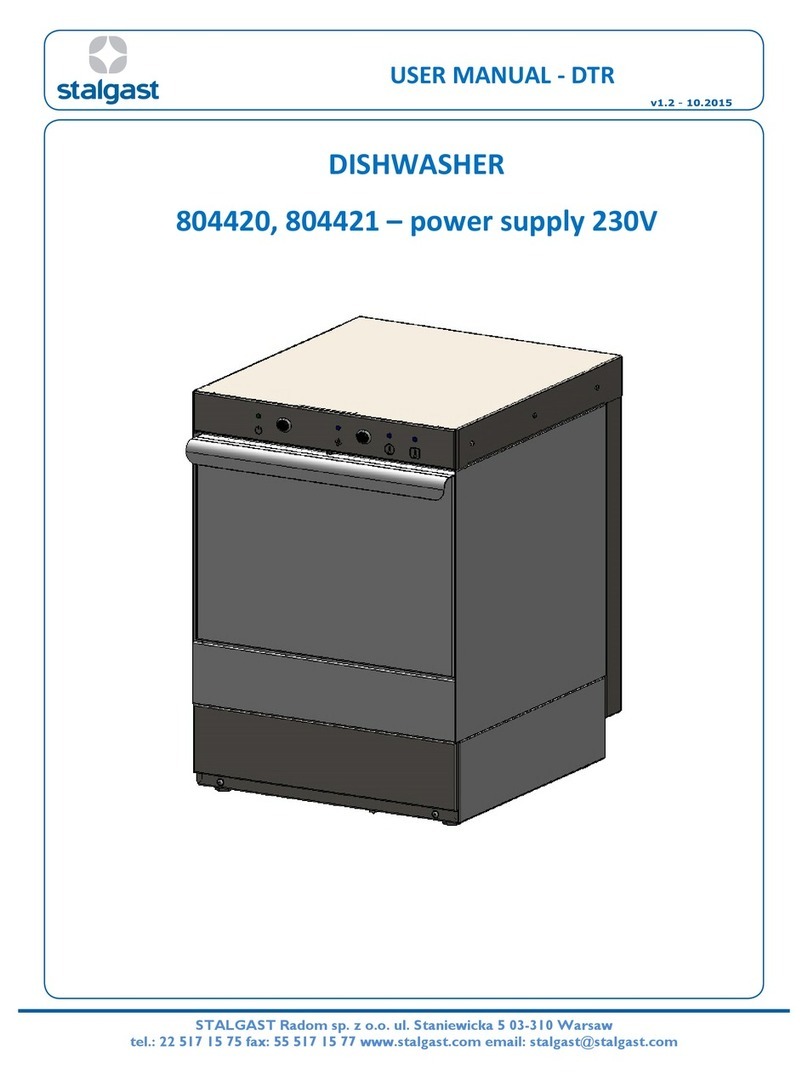- 3 -
Thank you for your purchase of a Stalgast product. Before use please familiarize yourself in detail with the following instruction
manual.
Copying of the following manual without the consent of the manufacturer is prohibited.
Images and drawings are of illustrative character and may differ from the purchased product.
ATTENTION: This manual should be kept in a safe place accessible for personnel. The manufacturer reserves the right to
change the technical characteristics of the product without any notice.
1. SAFETY INSTRUCTIONS
•Incorrect maintenance and/or use may cause serious harm to people and damage the appliance.
•The appliance can only be used for the purpose for which it has been designed.
•The manufacturer does not take any responsibility for damages caused by improper maintenance or use of the appliance.
•When in use, secure the appliance and its electrical plug from any contact with water or other liquids. In case the appliance
is accidentally dropped into water the electrical plug should be immediately removed from the socket and the appliance
should be inspected by a trained professional.
Failure to obey these instructions may cause life-threatening danger.
•Never open the casing of the appliance on your own.
•Do not stick any objects into the casing of the appliance.
•Do not touch the electrical plug attached to the appliance with wet hands.
•Check the condition of the electrical plug and cord regularly. In case the electrical plug or power cord is damaged order a
repair by a specialized service provider.
•In case the appliance is dropped or damaged otherwise, before further use always order a check-up and repair by a specia-
lized service provider.
•Do not make any attempts to repair the appliance on your own - this may cause life-threatening danger.
•Protect the electrical cord from contact with sharp or hot objects and keep it away from open re. When you disconnect
the appliance from the electrical socket always hold the plug and never pull the electrical cord.
•Secure the electrical cord (or the extension cord), so that it is not unplugged by mistake and so that no one can stumble
over it.
•Monitor functioning of the appliance while in use.
•Use of the appliance by people underage, physically or mentally incapable, with motion disorders as well as people without
proper experience and knowledge regarding the use of this appliance should not be allowed. All of the above mentioned
persons should only use the appliance under supervision of a person responsible for their health and safety.
•When the appliance is not used or undergoing maintenance you should always unplug the appliance from the source of
electricity by removing the electrical plug from the socket.
•ATTENTION: when the electrical plug is plugged into the socket the appliance remains live.
•Switch the appliance off before removing the plug from the socket.
•Never pull the appliance by the electrical cord.
2. SAFETY REGULATIONS
The manufacturer is not liable for any injury or damage to the product resulting from failure
to comply with recommendations contained in the manual, improper use of equipment, the use of non original spare parts
and individual attempts to repair the appliance.
The appliance shall be connected to the grounding conductor in accordance with local regulations and norms.
The appliance is compliant with the standards introduced by the European Union Directive 2002/96 / EC.
Suitable storage of appliance is part of environment pollution prevention.
Solvents such as e.g. alcohol, turpentine shall not be used in the glasswasher due to the risk of explosion.
Dishes with food debris also should not be put to the glasswasher.
The glasswasher and its elements should not be used as a ladder or a support for other appliances or objects.
Do not sit or lean on the open door of the glasswasher. This can cause an accident. For the reasons above
always close the appliance’s door.
Water left on the dishes in the end of the washing cycle is not suitable for drinking.




































